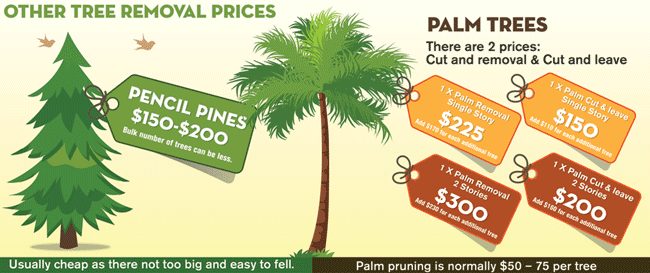Post-Tree Removal Therapy: Efficient Techniques For Landscape Repair
Post-Tree Removal Therapy: Efficient Techniques For Landscape Repair
Blog Article
https://does-bleach-kill-trees40627.howeweb.com/35935058/tree-stump-removal-proven-techniques-for-a-safe-and-reliable-yard-cleanup -Franks Leblanc
After a tree's elimination, your landscape may look quite different, and it's important to evaluate the consequences carefully. You'll want to examine the soil disturbance and check surrounding plants for any signs of stress and anxiety. Disregarding these aspects can lead to larger issues down the line. So, what should Palm Tree Trimming Equipment do with those stumps and roots? And exactly how do you pick the best plants for your rejuvenated area? Let's check out these vital actions.
Examining the Aftermath: Reviewing Your Landscape
After a tree removal, it's critical to examine your landscape to comprehend the impact it has on your yard.
Beginning by taking a look at the location where the tree stood. Search for indications of soil disruption, and examine the surrounding plants for any type of anxiety or damage.
You should also remember of exactly how the elimination has transformed sunshine exposure and air movement in your yard. This change can influence the growth of neighboring plants, so it's necessary to review their health and wellness.
Consider the visual facets also; the elimination may create an open space that you can redesign.
Lastly, think about any kind of prospective disintegration problems that could develop from the tree's lack. Resolving these aspects early will aid restore equilibrium to your landscape.
Managing Stumps and Roots: Choices for Elimination
As soon as you have actually assessed the after-effects of the tree removal, you'll likely need to deal with the stump and origins left behind.
You have a few options for removal. One efficient approach is stump grinding, where a professional uses a device to grind the stump down to below ground degree. This technique leaves very little interruption to your landscape.
If https://www.wsmv.com/call_4_action/south-nashville-residents-start-a-petition-asking-nes-for-better-tree-trimming-service/article_69e936a8-46d2-11ea-82c3-dbf4b550c7be.html favor a do it yourself technique, you can make use of a combination of excavating and chemical stump removers. Simply remember, this procedure can require time and effort.
Alternatively, take into consideration leaving the stump as a natural feature, which can function as an unique garden aspect or habitat for wild animals.
Whatever you choose, addressing the stump and roots is necessary for recovering your landscape.
Choosing the Right Plants for Your New Area
As you examine your newly cleared room, choosing the right plants can dramatically boost your landscape's charm and performance.
Begin by considering the sunlight and dirt problems. For warm areas, opt for drought-resistant plants like lavender or succulents. In shaded areas, ferns and hostas prosper well.
Think of the size and growth routines of your plants; mix perennials and annuals for seasonal variety. Do not neglect to include native types; they call for less upkeep and support local wild animals.
Team plants in weird numbers for a much more natural look and create layers for visual depth.
Lastly, guarantee you have a mix of shades and textures to keep your landscape vivid throughout the periods.
Delighted growing!
Final thought
To conclude, recovering your landscape after tree elimination is a gratifying procedure. By analyzing the results, dealing with stumps and roots, and choosing the right plants, you'll produce a thriving setting. Do not forget to integrate disintegration control measures to protect your dirt. With a little initiative and care, you can change your space right into a vivid garden that improves your home. Accept the opportunity to revitalize your landscape and enjoy the elegance of nature right in your backyard!
